Mike lived and worked in a large apartment in London’s Chelsea district, and with its white walls and modern furniture, it was very much in the mood of the times. By now, in addition to his Jaguar, Mike also owned a Lotus, which he raced professionally, achieving twelve wins, two seconds, and one third.
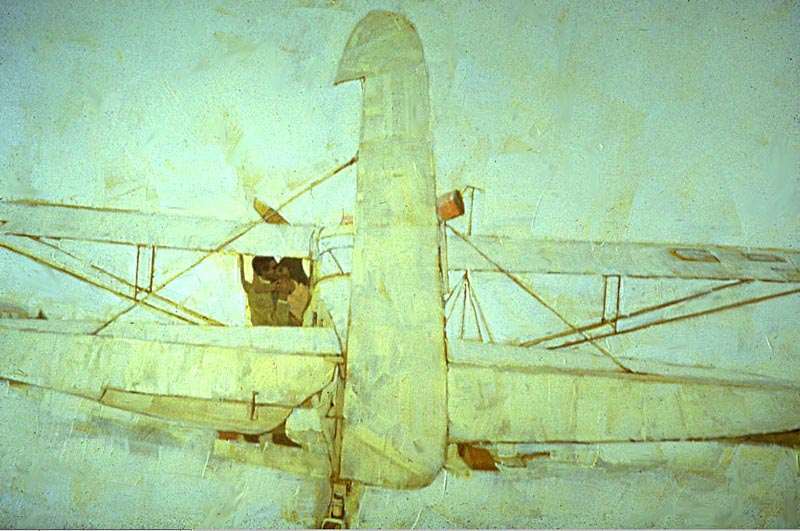 (Illustration for Woman’s Own magazine.)
(Illustration for Woman’s Own magazine.)Women’s magazine illustration was at its height at this time.
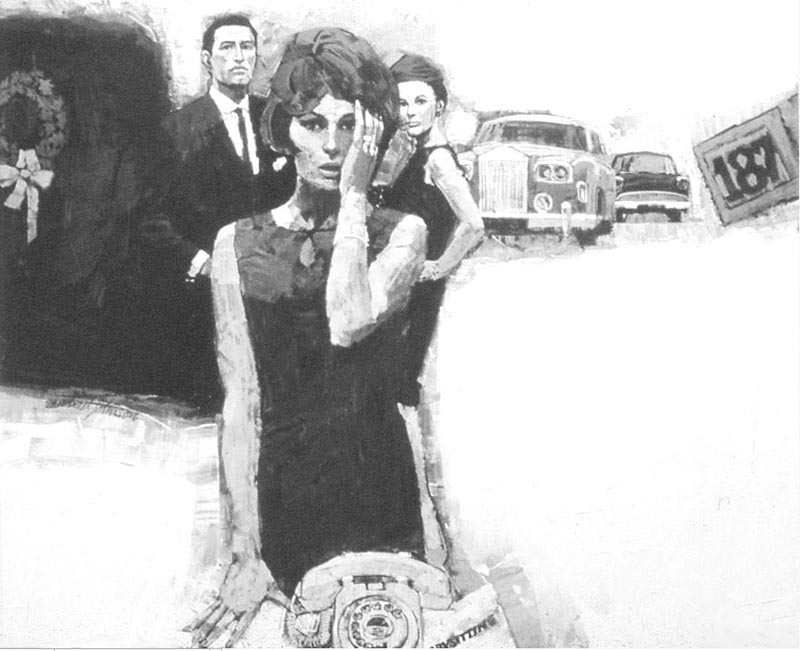 (The second part of a ten part serial that I commissioned when I was art director of Woman’s Mirror. Unfortunately the full-colour opening spread has disappeared without trace. The main model was Nancy Egerton.)
(The second part of a ten part serial that I commissioned when I was art director of Woman’s Mirror. Unfortunately the full-colour opening spread has disappeared without trace. The main model was Nancy Egerton.)One of Mike’s major clients was Woman magazine, which, under the brilliant editorship of Mary Grieve, and with George (Tiny) Watts as art editor, was the world’s greatest selling weekly magazine for women, with weekly sales of 3.5 million. We could have sold more, but didn’t have the printing capacity to produce more copies. Its sales are now down to around 275,000 copies every week.
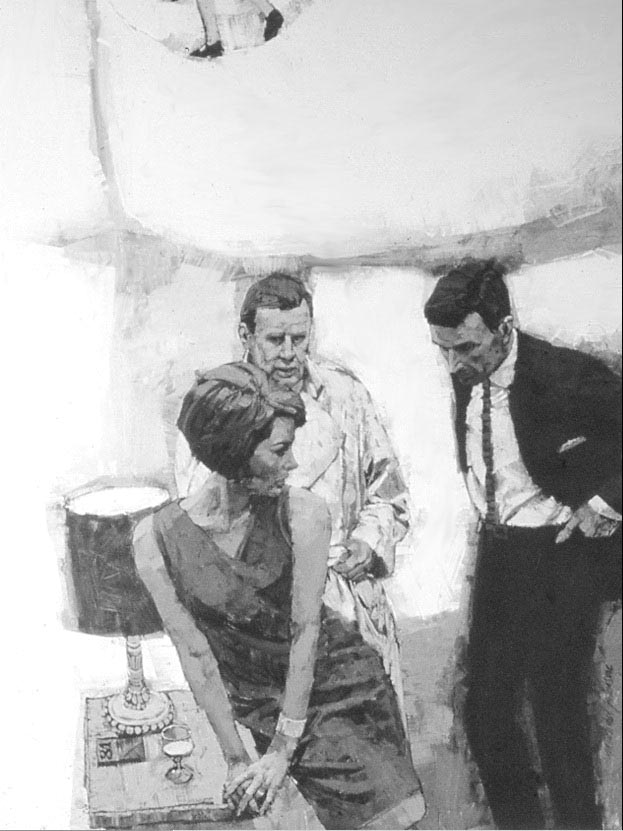 (The third part of the Woman’s Mirror serial. I thought that these were the best monochrome illustrations that Mike had ever produced.)
(The third part of the Woman’s Mirror serial. I thought that these were the best monochrome illustrations that Mike had ever produced.)The early to mid-sixties had been a period of exciting artistic experimentation for many of the illustrators...
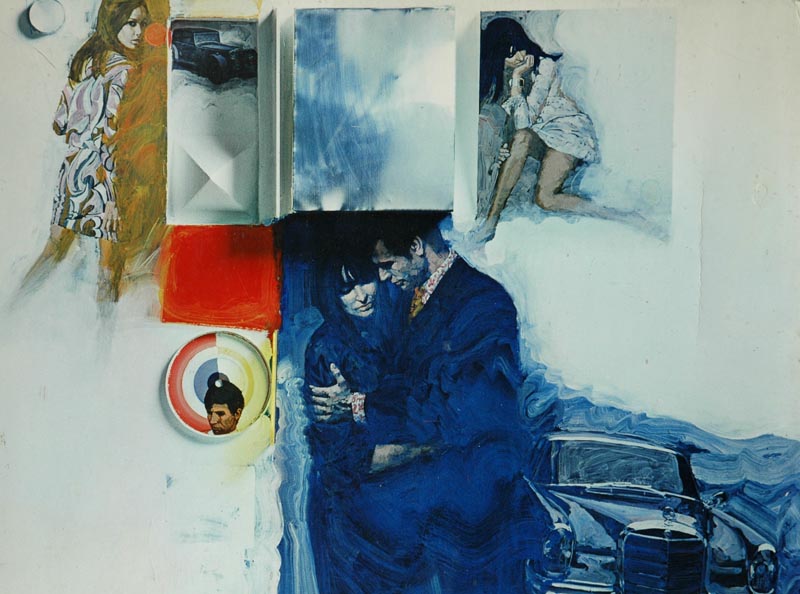 (During the ’60s, Mike was producing a lot of work, which was three dimensional, as well as the usual two-dimensional paintings. In this illustration the shapes above the couple in the clinch was a box and panel made of polished aluminum, which were then painted on. The circular shape on the left was also a 3D structure.)
(During the ’60s, Mike was producing a lot of work, which was three dimensional, as well as the usual two-dimensional paintings. In this illustration the shapes above the couple in the clinch was a box and panel made of polished aluminum, which were then painted on. The circular shape on the left was also a 3D structure.)... but by the end of the decade the readers were starting to disappear. The commercial television companies started to obtain larger portions of the available advertising revenue, and newspaper and magazine page counts went down.
 (A double portrait of James Joyce painted for Hodder and Stoughton.)
(A double portrait of James Joyce painted for Hodder and Stoughton.)In common with the illustrators working in the USA, the illustrators working in the United Kingdom started to feel the pinch. There was a decline in the interest in fiction in women’s magazines, and for some reason art directors and art editors started asking the illustrators to produce more highly finished work, and they increasingly turned to photography instead of illustration.
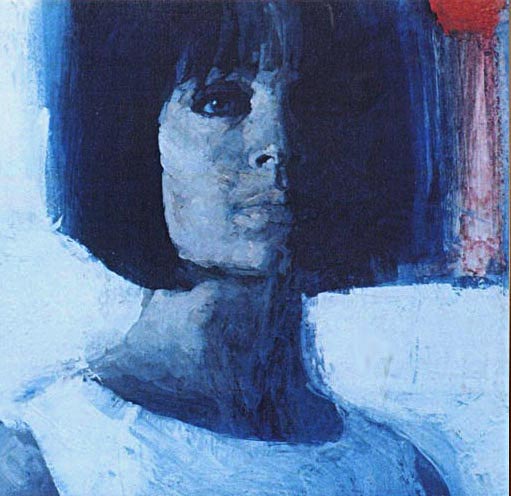 (One of my favourites: a private portrait commission.)
(One of my favourites: a private portrait commission.)In common with all illustrators, Mike wasn't very pleased about this. He wasn't worried, just annoyed at they way things were changing.
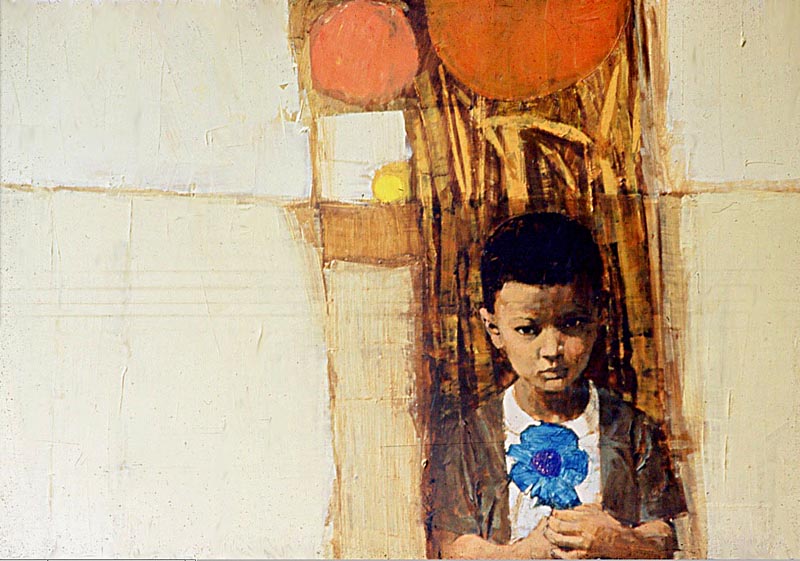 (An unusual illustration for Homes & Gardens magazine.)
(An unusual illustration for Homes & Gardens magazine.)Mike has tremendous energy, and always had great faith in his ability. However, he felt the need to create new markets for himself and prepared experimental work on a speculative basis.

(A private commission for a charity sale run by Sybilla Edmondstone, the Chicago heiress, who had Sybilla’s Club in London’s West End named after her. Another of Mike’s 2 and 3D combinations. Frost and Reed later published the painting as a print.)
The three lovely illustrations presented to Willie Landels, which were shown in yesterday's post, were part of this process of experimentation.
Continued tomorrow
* Bryn Havord was assistant art director of Woman magazine in the late '50s and early '60s. From 1963 to 1965 he was associate editor and art director of Woman's Mirror; both of which were published in the UK. During that time he commissioned work from all the leading British Illustrators including Michael Johnson, Walter Wyles, Brian Sanders, Eric Ernshaw and Gerry Fancett.






0 comments:
Post a Comment